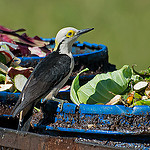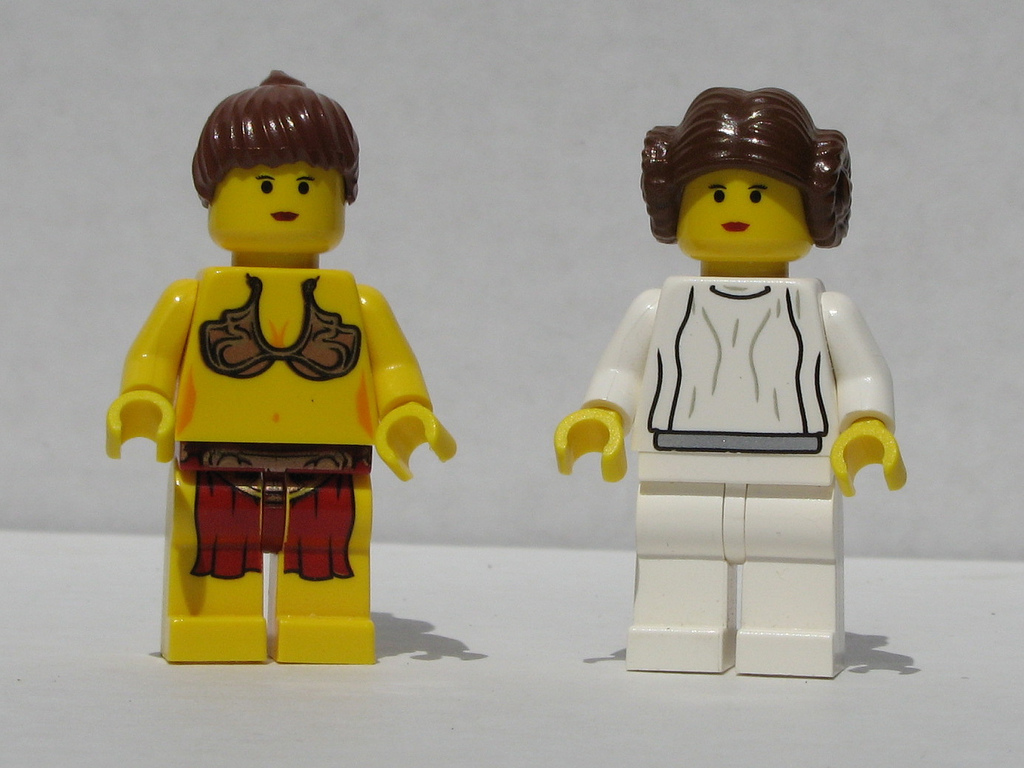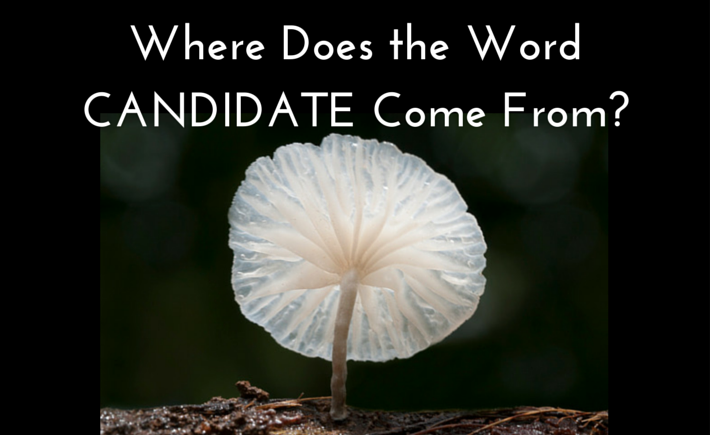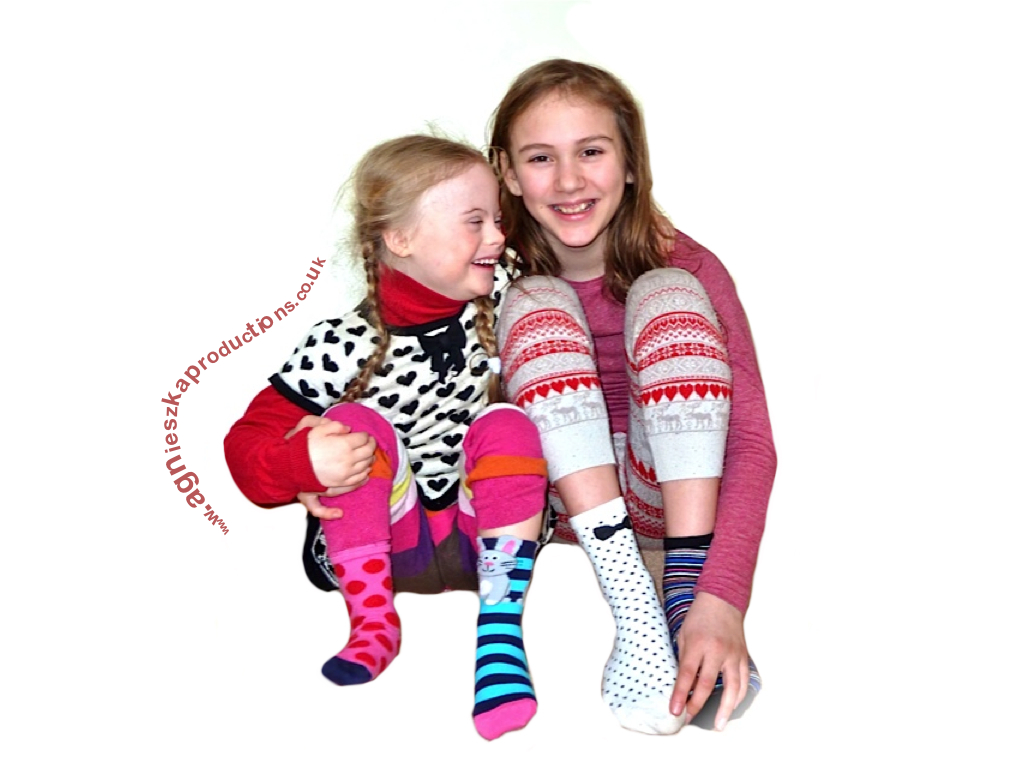I love Star Wars. It’s my favourite trilogy of films ever. At least, I loved it when I was 8 and 9 and played Star Wars in the park wit my friends. I wasn’t overly fond of it when I was 6 years old and saw Empire Strikes Back for the first time. I still fast forward through the beginning bit of the movie where Luke Skywalker gets kidnapped by an abominable snowman on the planet Hoth and has to be rescued by Han Solo. It terrified me so much when I was 6 and saw it the cinema that my dad had to take me out.
Where Does the Word Candidate Come From?
Today is election day in UK, when the citizens of the country choose their new government. You can read all about how the elections work here. You wouldn’t think that dress codes of ancient Rome would affect the elections of today, but they do! Millie Slavidou explains.
Today is a good day to think about the word ‘candidate’. I rather like the etymology of this one.
It comes from Latin candidus, which is the past participle* of candidare, which meant ‘to make white, to make bright’.
Not because of whitewashing whatever the candidates might have said or done! It was because in ancient Rome candidates who wanted to be elected either to the Senate or any other office wore white robes.
If we take it one step further back, to a root meaning ‘white, shining’, we find that ‘candle’ is a cognate.**
*Past Particle
The past particle is the past form of the verb that can also be used as an adjective, like “a fallen tree”. In the case above, the adjective is like saying ‘whitened’ in English. Other examples of past particles are:
verb: bite
past particle: bitten
example: a bitten apple
verb: choose
past particle: chosen
example: aa chosen present
verb: crash
past particle: crashed
example: a crashed bicycle
**Cognates
A cognate is a distant relative, a word ultimately from the same root. Like a third cousin. Here are some examples of cognates.
 Book is related to beech. Well, actually, book means beech! Both come from Germanic word meaning beech tree, Buche.
Book is related to beech. Well, actually, book means beech! Both come from Germanic word meaning beech tree, Buche.
Germanic runes were originally inscribed on tablets made of beech wood. Modern German for book is Buch!
 WOOL and FLANNEL are distant cognates. Today, fashion stores often describe plaid shirts as ‘flannel’, but it is actually a soft woven fabric, originally made of wool, but now often cotton or synthetic. You might have a flannel pyjamas, which are lovely and cosy in the winter!
WOOL and FLANNEL are distant cognates. Today, fashion stores often describe plaid shirts as ‘flannel’, but it is actually a soft woven fabric, originally made of wool, but now often cotton or synthetic. You might have a flannel pyjamas, which are lovely and cosy in the winter!

 Today’s featured image is Marasmiellus candidus, a type of mushroom. You will often find the word ‘candidus’ used in botany or biology to describe something that is white, such as crocus candidus or the white woodpecker Melanerpes Candidus. There is even a white monkey called Propithecus candidus.
Today’s featured image is Marasmiellus candidus, a type of mushroom. You will often find the word ‘candidus’ used in botany or biology to describe something that is white, such as crocus candidus or the white woodpecker Melanerpes Candidus. There is even a white monkey called Propithecus candidus.
Falconry and the Tudors
When you write a book that is set in a particular period of history, it is important to get the details correct. This means that writers of historical fiction have to do a lot of research.
The first scene of Katharine Edgar’s novel, Five Wounds takes place on a hillside in sixteenth century England, where her heroine, Nan, is hoping to see her young merlin falcon make its first kill. Katharine had find out all about falconry and the Tudors – the keeping and training of falcons, and other birds of prey.
When I showed the first scene of Five Wounds to some writing friends, some of them asked a question I wasn’t expecting. ‘How rich is Nan’s family? They live in a big house so why does she need to hunt for food?’
Good question!
Great Women You Should Know… Helen Sharman
Dr. Helen Sharman, the first British astronaut and at 27 the fifth youngest person to be launched into space on the 18th May 1991. Our contributor Annie May Gibbs had the opportunity to meet Dr Sharman and ask her some questions.
Lots of Socks for World Down Syndrome Day
Do you sometimes wear non-matching socks? When you can’t find ones to match or just because you want to? Well on the 21st March you have the perfect excuse to and Agi is going to tell you why.
Agi has been making videos about her life with her little sister, who just happens to have Down Syndrome, for many years. We asked her to tell us more about this condition, and about life with Magdalena and to share some of her videos with us.
Firstly though who am I?
I’m called Agnieszka (Agi for short) and I am home educated with my little sister Magdalena, who is 7 years old. I have a website which I blog on about our life together and anything else I am interested in. I want to be a filmmaker when I’m older, and you can view lots of films that I’ve made on my website, and Magdalena wants to be an artist. She is one of my best friends. We have loads of fun together, and I don’t treat her any differently or treat her ‘specially’, even though she happens to have Down’s syndrome. Which is where the lots of socks come in…but first, let me explain.
I would never have known this unless my little sister, Magdalena was born with an extra 21st chromosome.
Have you worked out yet why World Down Syndrome day is on the 21st of March?
It’s because people with Down syndrome have three chromosomes on chromosome number 21, instead of the usual two. This is also known as Trisomy 21.
Why is it Called Down’s Syndrome?
So why call it Down’s syndrome? No, it’s not because people with Down’s syndrome are ‘down’ or grumpy, it’s actually because Dr John Langdon Down discovered the condition, and it was named after him.
Lot’s of people my age don’t know what Down’s syndrome is, (actually lots of adults don’t either) and that can make them scared of what they don’t know about, so they ignore Magdalena or talk ABOUT her instead of TO her or say something unkind thinking she won’t understand or be hurt by it. So before I get onto the socks, I want to tell you a bit about what Down’s Syndrome is and what it isn’t!




